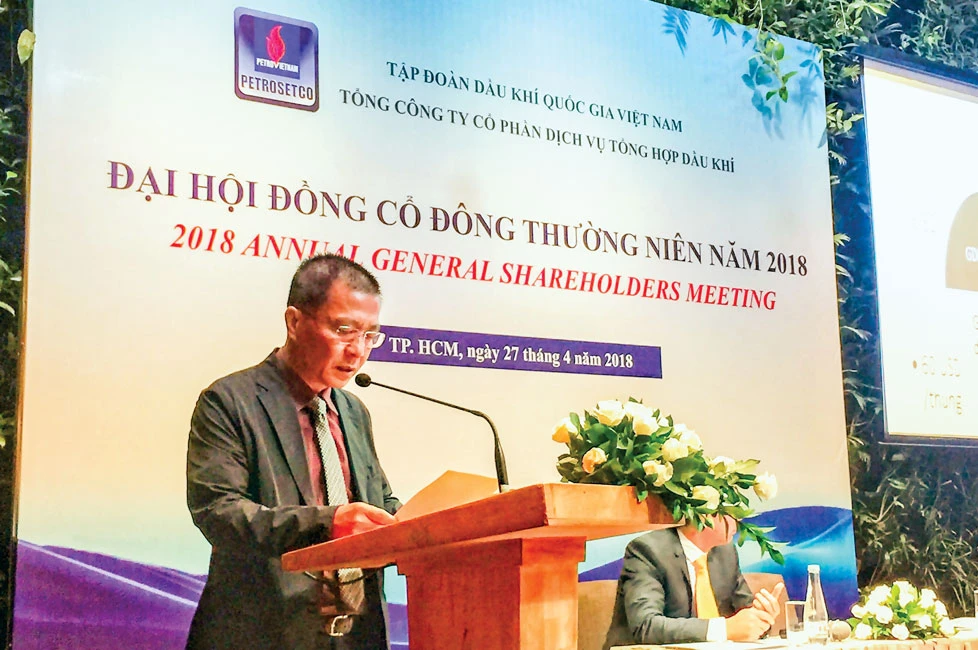
As the earliest stock among the distribution industry, it was believed that PET (Petrosetco) would grow very strongly, but contrary to expectations, PET stocks are currently holding the lowest market price in the industry.
Past status quo
On 12 September 2007, at the first session on HOSE, 25.53 million PET shares closed at VND 58,000 per share. By the end of 2007, PET posted a net profit of about VND 52 bn and continued to have a strong growth rate for the next five years on the stock exchange. By the end of 2011, PET reported a profit of nearly VND 293 bn. This is also the period when PET shares "stormed" the market and received a lot of attention from both individual and institutional investors.
PET General Shareholders' Meetings (AGM) were held in luxurious hotels and many people came to attend. Many shareholders even attended a PET General Meeting just to enjoy an expensive cup of tea or pack some of the food to take back home. During this glorious period of PET, three units with the same functions as PET, namely, DGW (DigiWorld-an enterprise operating in wholesale), MWG (Mobile World) and FRT (FPT Retail) were also in the competition, but PET remained an exclusive commodity.
At that time, PET's main business was to distribute Nokia mobile phones. So far both Apple and Samsung smartphones had not yet entered the market as aggressively as now. PET also sold Dell and Fujitsu laptops in the Vietnamese market. Petrosetco Distribution (PSD) warranty stamps on electronic products sold by PET were considered important guarantees for quality of products.
PSD, the company in which PET held more than 55% of shares, played a key role in distribution, and was put on the stock exchange in mid 2013, with 14.2 million shares listed on HNX for the first time. PSD closed the first trading session at VND 68,000 per share, which was higher than PET at the time of listing, and was considered an attractive item because of being a key unit of Petrosetco. In 2013, PET announced audited revenue of nearly VND 11,750 bn, of which PSD contributed VND 6,300 bn, accounting for 53.6%.
Getting to the top of the ladder was hard, but it was getting even more harder for PET to maintain this status quo, and gradually PET began to show signs of a decline. After 2011, business results of PET began to show a sharp fall from a net profit of nearly VND 293 bn in 2011, to VND 188 bn in 2012, and a continual falling the following year. In 2018, the net profit was approximately VND 132 bn.
In the financial statement for the fourth quarter of 2019, PET reported accumulated profits of four quarters, where the profit of the whole year of 2019 was around VND 149 bn, an increase of about 13% compared to 2018. However, the market did not recognize this as a positive signal, because PET had now dropped its share below par value. In the last ten sessions, PET was at around VND 7,600 per share. Previously, there was a time when PET liquidity was in hundreds of thousands, even millions of shares per session, while this time round at the trading session PET had less than 1,000 shares.
Difficult to keep momentum
Ten years ago, an enterprise with a position, name, and a profitable business having a stock price below par value would have been considered very strange. However, now the case of PET is no longer unique, showing the harsh, but necessary, divergence of the market. Although this business is still profitable, PET has shown no improvement for the long term, while other distribution sectors such as MWG and DGW still attract investors, thanks to the shares of its business leaders.
Long-term growth expectations are often based on two factors for distribution enterprises. Firstly, the products that businesses distribute must show growth potential. Secondly, when a product segment faces saturation, enterprises must immediately replace with new products. As is the case in the smartphone segment which has entered a saturation point, and this is quite visible, and has led to Mobile World, FPT and DigiWorld to look for new products to sell, from electronics to pharmaceuticals, cosmetics to watches.
The distribution and consumption sectors still have many special advantages. The branding and wholesale system that Petrosetco has created is not something that can be developed in a day, and it is important that this business still remains profitable. But PetroVietnam is facing challenging times and it is not easy for PET shares to sell at a high price. If PET continues to operate as it is doing today, it will be difficult to create and keep up a momentum.
There are two scenarios for creating a push for PET. Firstly, PET management must introduce breakthrough strategies to revive both image and position, and create operational flexibility to compete fairly with other private distribution companies. However, there is an opinion that if PET could do this it would have done so a long time ago already. Secondly, it is necessary to have the participation of shareholders from the outside, although investing in distribution and retail is not easy at this time, and many companies have failed in the past and have had to close down.




















